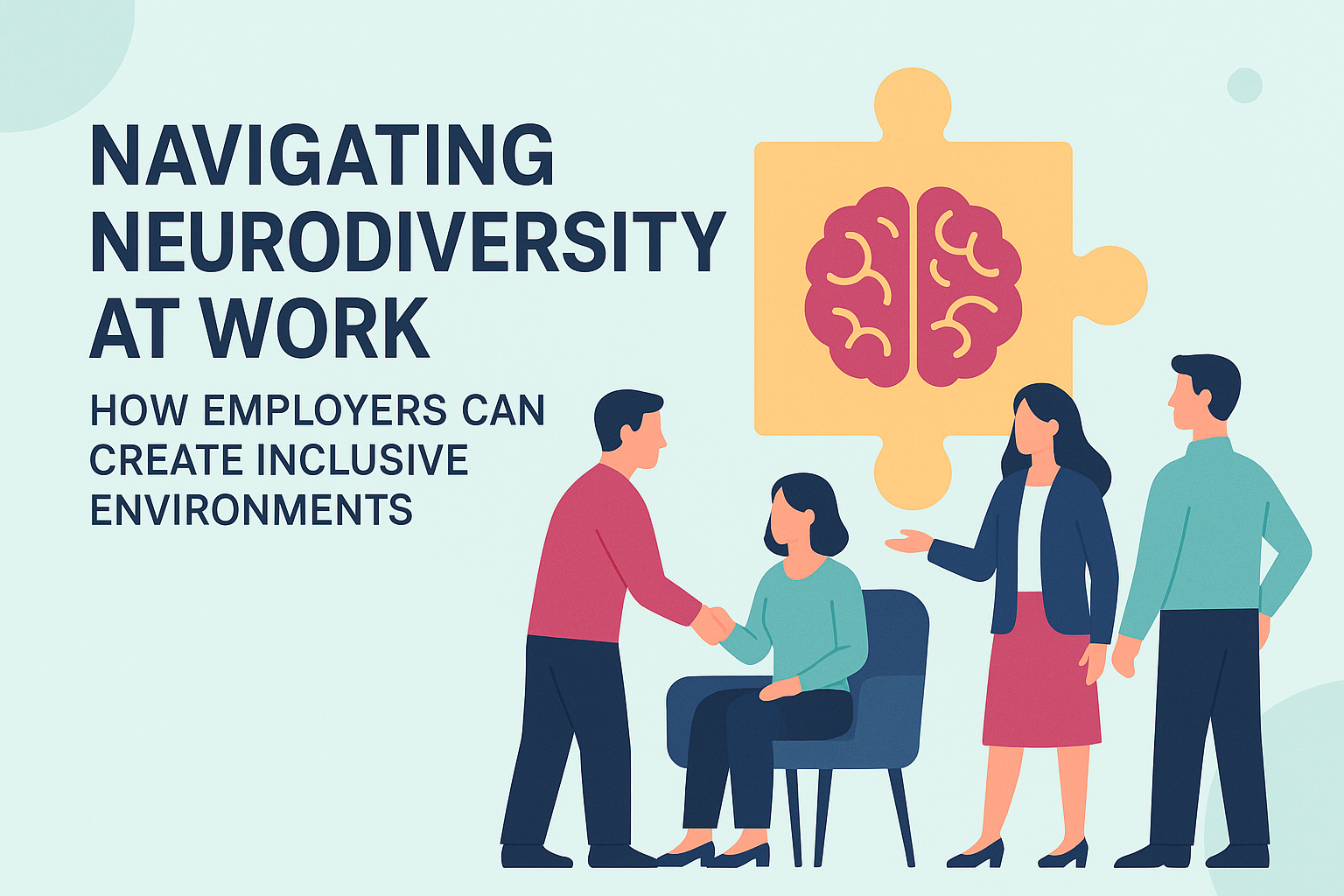Neurodiversity in the workplace isn’t just a trend — it’s a practical way to build stronger, more inclusive teams. In this blog, we explore what neurodiversity in the workplace really means, the barriers employees can face, and how small changes can make a big difference for employers and staff alike.
What Do We Mean by “Neurodiversity”?
Neurodiversity refers to the natural differences in how people’s brains work. This includes (but isn’t limited to) autism, ADHD, dyslexia, dyspraxia, dyscalculia, and more.
It’s about recognising that there’s no single “right” way of thinking, learning, or processing information — and that those differences can bring huge strengths to your team, from creativity and focus to innovation and problem-solving.
Common Barriers Neurodivergent Employees Face
| Barrier | What Employers Often Miss | Impact |
| Sensory overload | Bright lights, noisy spaces, constant chatter | Stress, fatigue, reduced concentration |
| Unclear communication | Vague instructions or mixed messages | Confusion, mistakes, anxiety |
| Rigid working patterns | “9-to-5 only” mindsets | Burnout, lower productivity |
| Assumptions & stigma | Misunderstanding or dismissive comments | Low confidence, disengagement |
Practical Steps for Neurodiversity in the Workplace
Raise Awareness (Especially Among Managers): Run short awareness sessions — even 30 minutes can make a difference. Help managers understand the basics and feel confident having open, supportive conversations.
Flex Where You Can: Flexibility isn’t just about hours — it’s about how work gets done. Hybrid days, quieter workspaces, or short sensory breaks can make a huge difference.
Keep Communication Clear: Use straightforward language. Summarise action points in writing. Check understanding instead of assuming. This helps everyone, not just neurodivergent employees!
Tweak the Environment: Simple adjustments go a long way: adjustable lighting, noise-reducing headphones, or offering a “quiet zone” option.
Offer Reasonable Adjustments: Remember your legal duty under the Equality Act 2010 — but think beyond compliance. Be proactive about asking what works best and reviewing it regularly.
Gather Feedback & Keep Evolving: Create anonymous feedback routes, involve employees in shaping policies, and review progress at least once a year.
Why Neurodiversity in the Workplace Benefits Everyone
When you build an environment that supports neurodivergent employees, everyone benefits — communication improves, morale goes up, and productivity follows.
Inclusivity isn’t a one-off HR project; it’s a culture shift that helps people feel valued for who they truly are.
Final Thought
Neurodiversity isn’t about “fixing” people — it’s about fixing the environment so that every individual can shine. When employers embrace neurodiversity in the workplace, they unlock the potential of every employee — creating happier, more productive teams.
If you’d like help auditing your policies or building a neuro-inclusive culture that’s practical (and people-friendly!), get in touch — virtuHR can help you say goodbye to HR hassle and hello to life.

